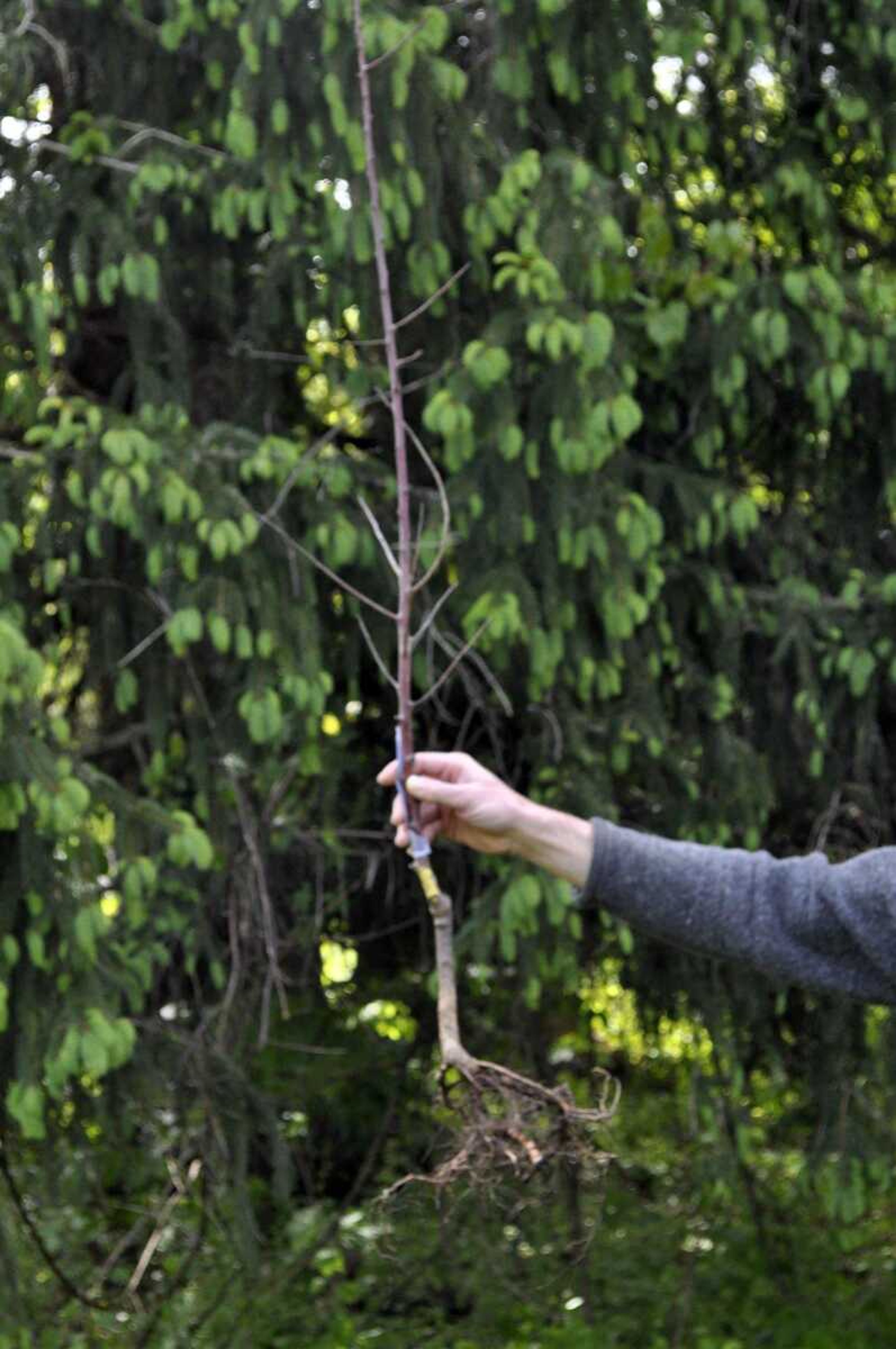Plant a tree to enjoy for years
If delayed gratification sometimes seems to be too much a part of gardening, it does teach us to appreciate the means to an end as much as the end itself. Especially with planting trees. Your vision might call for a towering maple or spreading beech in a corner of your front yard, but you usually can do no more than plant a smaller one, care for it and wait...
If delayed gratification sometimes seems to be too much a part of gardening, it does teach us to appreciate the means to an end as much as the end itself. Especially with planting trees.
Your vision might call for a towering maple or spreading beech in a corner of your front yard, but you usually can do no more than plant a smaller one, care for it and wait.
Not that full-size trees cannot be -- and sometimes are -- moved for instant effect. Take along enough earth, keep it intact around the roots, and even a large tree hardly knows it's been relocated. But such moves demand heavy, specialized equipment and plenty of money. Even then, a number of those trees die within a year.
Smaller is better
We mortals are better off planting smaller trees -- much, much smaller ones. In fact, if you're talking about trees that you ordinarily buy from a nursery, smaller is usually better than larger. Research has shown that if a large and small tree of the same species are planted under similar conditions, growth of the smaller tree often outstrips that of the larger one after a few years.
One reason why smaller trees grow better is they suffer proportionately less root loss in transplanting. A larger tree needs a lot more water to recover from its move, and because it takes longer to re-establish itself, watering must be continued longer, often for a few years.
Kinds of tree transplants
Nursery trees are commonly sold balled-and-burlapped, in pots or bare-root.
A balled-and-burlapped tree is typically dug from the field in spring, after which its roots and attached ball of soil are swathed in burlap. They survive transplanting well as long their root balls remain intact, they are planted soon -- preferably before growth begins -- and their tops are not too large in proportion to the size of the roots.
Potted trees spend their whole youth in pots -- or at least they should. Advantages of potted trees are that they can be transplanted almost any time of year and with no loss of roots. Potting soils are porous and watered frequently at the nursery so, once transplanted, potted trees need diligent and regular watering until roots establish themselves in surrounding soil.
If the tree is too big for its pot, however, nix any benefits a potted tree gets from having its whole root system moved intact.
A bare-root tree is dug from a field, sold and replanted while still dormant and leafless. Moist peat moss, sawdust or shredded paper tucked around the roots keeps them moist from the time they are out of the ground until the tree is settled into its new home. Kept moist and cool before planting, bare root trees establish quickly and grow well.
How big a tree to plant
You're now ready to shop for a small tree, or at least one whose top is not too big for its roots. But how big is too big?
Three measures help judge the quality of a nursery tree: a trunk diameter 6 inches to 12 inches above the soil line; the tree height; and the diameter of the root ball. According to the standards, a tree whose root ball is 12 inches across should be no taller than 4 feet or have a trunk caliper of no more than 3/4 inches. Corresponding measures for root balls 18 inches across are 7 feet and 1.5 inches.
With potted trees, look for a tree whose height is no more than two or three times the depth of its pot. Even better is to tip the plant out of its pot. What you should see is plenty of soil, with young white, pink or tan root tips growing at the outer edge. Thick roots circling the bottom of the root ball are a no-no.
Look for similar proportions in a bare root plant, as well as a good mass of roots.
ENJOY THE MOMENT
So plant small and enjoy caring for your plant, watering it, pruning it and watching it grow. As your little tree grows, frost, rain and sun will lend a patina to the trunk and limbs. Near the ground, creeping plants will gently embrace it. There's no way around it: Time is needed to bring character to any tree.
Connect with the Southeast Missourian Newsroom:
For corrections to this story or other insights for the editor, click here. To submit a letter to the editor, click here. To learn about the Southeast Missourian’s AI Policy, click here.









